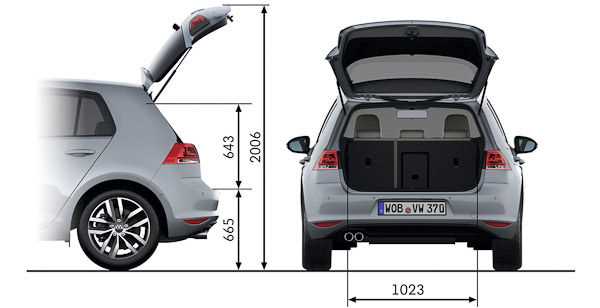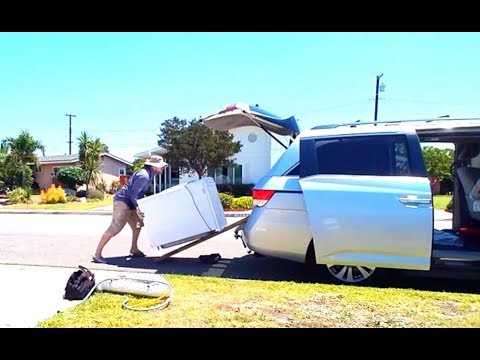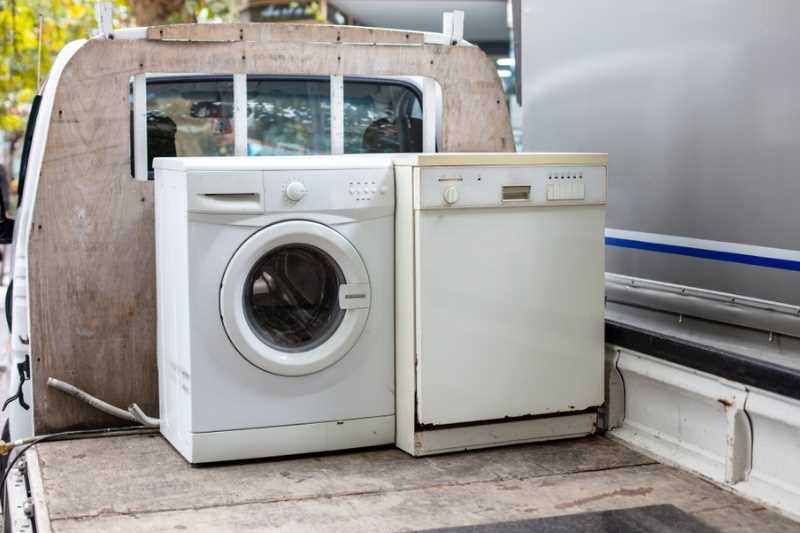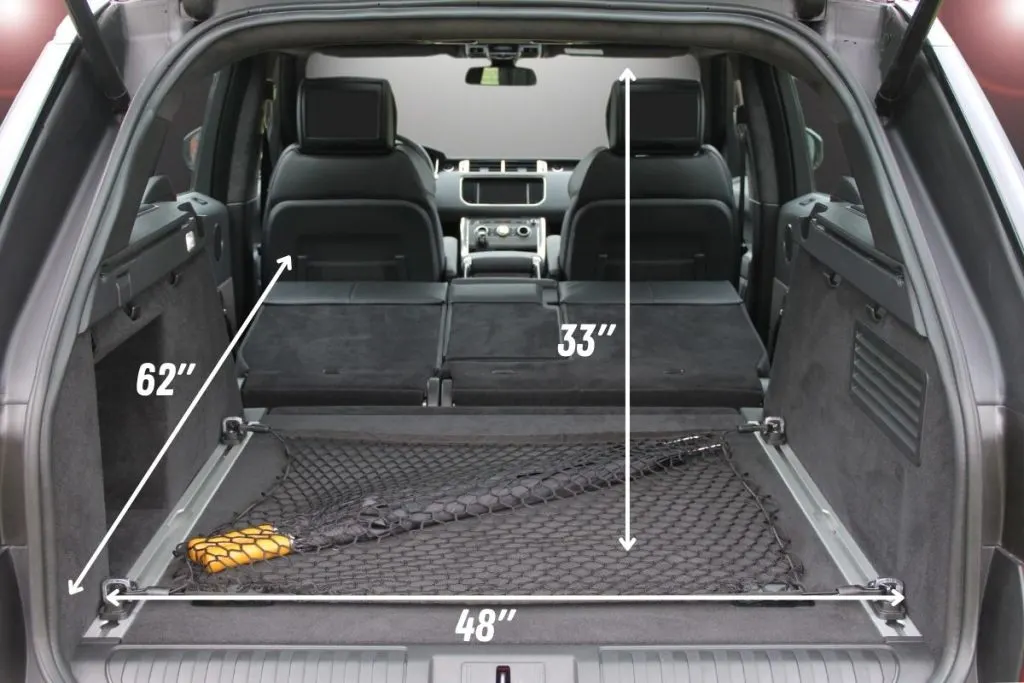




When it comes to moving large items, such as washing machines, many people wonder if these appliances can fit in a car. The answer to that question depends on a few different factors.
Firstly, the size of the washing machine will play a significant role in determining whether or not it can fit in a car. Washing machines come in various sizes, with the most common ones being around 27 inches wide, 29 inches deep, and 43 inches high. If you have a smaller car or a compact sedan, it is unlikely that you will be able to fit a standard-sized washing machine inside.
Secondly, the dimensions of the car’s trunk or cargo space will also be a limiting factor. Even if the washing machine’s size is within the car’s limits, it may not fit due to the narrow opening or the overall capacity of the trunk. It’s important to measure the car’s cargo space before attempting to fit a washing machine inside.
Lastly, the weight of the washing machine is another consideration. Standard-sized washing machines typically weigh around 150 pounds. This weight poses a challenge for one or two people to load and unload the appliance safely without causing any damage to the car or themselves. It is advisable to seek professional help or use a proper moving vehicle if the weight of the washing machine exceeds the car’s capabilities.
Overall, while it may be possible to fit a washing machine in a car, it is not recommended due to the size, weight, and potential risks involved. It is advisable to use a moving truck or professional movers to transport large appliances safely and efficiently.
Pros and Cons of Transporting a Washing Machine in a Car

Transporting a washing machine in a car can be a convenient option for those who have limited access to a truck or delivery service. However, there are several pros and cons to consider before attempting to transport a washing machine in a car.
Pros:
- Cost-effective: Transporting a washing machine in a car can be a cost-effective option compared to renting a truck or hiring a delivery service.
- Convenience: If you have a car available, it may be more convenient to transport the washing machine yourself instead of waiting for a delivery.
- Faster delivery: By transporting the washing machine yourself, you can avoid potential delays caused by scheduling conflicts with delivery services.
- Control over handling: When transporting the washing machine yourself, you have control over how it is handled, ensuring that it is properly secured and protected.
Cons:

- Space limitations: Washing machines are large and bulky, which can make it challenging to fit them in a car, especially smaller vehicles.
- Weight limitations: Some cars have weight limitations for their trunk or backseat, which may prevent you from safely transporting a heavy washing machine.
- Potential damage: Improper handling or insufficient padding can lead to damage to the washing machine or your car during transportation.
- Increased risk of accidents: Transporting a washing machine in a car can affect the vehicle’s balance and stability, potentially increasing the risk of accidents.
- Inconvenience: Loading, unloading, and maneuvering a washing machine in a car can be physically demanding and time-consuming.
Before attempting to transport a washing machine in a car, carefully consider the pros and cons to determine if it is the right choice for your situation. If you decide to proceed, make sure to take necessary precautions to ensure the safety of both the washing machine and your car during transportation.
Determining the Dimensions of Your Washing Machine
Before attempting to fit a washing machine into your car, it is important to determine the dimensions of the washing machine to ensure that it will fit properly. The dimensions of a washing machine typically include its height, width, and depth.
Measuring the Height
To measure the height of your washing machine, use a tape measure to measure from the bottom of the washing machine to the top, making sure to include any protruding parts such as knobs or control panels. Write down the measurement in inches.
Measuring the Width
To measure the width of your washing machine, use a tape measure to measure from one side of the washing machine to the other, again including any protruding parts. Write down the measurement in inches.
Measuring the Depth

To measure the depth of your washing machine, use a tape measure to measure from the front of the washing machine to the back. Make sure to include any protruding parts. Write down the measurement in inches.
Once you have determined the height, width, and depth of your washing machine, you can compare these measurements to the dimensions of your car to determine if it will fit. Keep in mind that you may need to remove seats or rearrange the interior of your car to accommodate the washing machine.
If the dimensions of your washing machine are too large to fit in your car, you may need to consider other options such as renting a truck or delivery service to transport the washing machine to its destination.
Preparing Your Car for Transporting a Washing Machine
If you need to transport a washing machine in your car, it’s important to properly prepare your vehicle to ensure a safe and hassle-free journey. Here are some steps you can follow to prepare your car for transporting a washing machine:
1. Measure Your Car’s Dimensions
Start by measuring the dimensions of your car’s trunk or cargo area to see if the washing machine will fit. Make sure to measure the length, width, and height of the available space. Additionally, check if the trunk opening is wide enough to accommodate the washing machine.
2. Clear the Backseat and Trunk
Remove any items from the backseat and trunk of your car to create enough space for the washing machine. This includes removing any car seats, tools, or other items that may obstruct the loading area.
3. Fold Down the Back Seats
If your car has folding back seats, fold them down to create a larger cargo space. This will allow you to fit the washing machine more easily and securely.
4. Use Protective Sheets or Blankets
To prevent any damage to your car’s interior and the washing machine, consider using protective sheets or blankets. Place them on the seats, floor, and trunk to protect against scratches, spills, or any other potential harm during transportation.
5. Secure the Washing Machine
Ensure that the washing machine is properly secured in your car to prevent movement during transit. You can use bungee cords or tie-down straps to keep the appliance in place. Make sure it is tightly secured from all sides to avoid shifting or tipping over.
6. Check Your Car’s Weight Capacity
Before transporting the washing machine, make sure to check your car’s weight capacity. The combined weight of the washing machine and any passengers or luggage should not exceed the vehicle’s maximum weight limit. Refer to your car’s manual for specific weight capacity information.
7. Drive Slowly and Cautiously
While transporting the washing machine, drive slowly and cautiously to avoid any sudden stops or turns. It’s essential to maintain a steady speed and be extra cautious while driving to prevent any potential accidents or damage to your car or the washing machine.
By following these steps, you can effectively prepare your car for transporting a washing machine and ensure a smooth and safe journey.
Tips for Loading and Securing a Washing Machine in a Car
Transporting a washing machine in a car can be a challenging task, but with proper preparation and securing techniques, it can be done safely and efficiently. Here are some tips to help you load and secure a washing machine in your car:
1. Measure the washing machine and your car

Before attempting to load the washing machine in your car, measure both the dimensions of the machine and the available space in your car. This will help ensure that the machine will fit properly and allow you to plan the best position for loading.
2. Clear out space in your car
Remove any items from the car that may obstruct the loading process or cause damage to the washing machine. This includes removing floor mats, seat covers, and any loose objects that may shift during transport.
3. Use proper lifting techniques
When lifting the washing machine, make sure to use proper lifting techniques to avoid straining your back or causing injury. Bend your knees, keep your back straight, and lift with your legs. If possible, use a dolly or assistance from another person to make the lifting process easier.
4. Secure the washing machine inside the car
Once the washing machine is in the car, it’s important to secure it to prevent any movement or damage during transportation. You can use a combination of straps, bungee cords, or ropes to secure the machine to the car’s existing hooks or tie-down points. Make sure the straps are tight and the machine is stable.
5. Protect the washing machine
To avoid any scratches or damage to the washing machine, consider using moving blankets, old blankets, or towels to wrap it before securing it in the car. This will provide an additional layer of protection and prevent any damage during transit.
6. Drive carefully
When driving with a washing machine in your car, it’s important to take extra precautions to ensure a smooth and safe journey. Avoid sudden braking or acceleration, take turns slowly and carefully, and avoid any rough roads or potholes that may jostle the machine.
By following these tips, you can safely load and transport a washing machine in your car without risking damage to either the machine or your vehicle.
Alternative Options for Transporting a Washing Machine
While it may not always be feasible to transport a washing machine in a car due to its size and weight, there are alternative options available. Here are some alternative methods for transporting a washing machine:
Hiring a Professional Moving Service
If you have a large vehicle or truck, you can hire a professional moving service that specializes in transporting heavy appliances like washing machines. They will have the necessary equipment, such as dollies and straps, to secure and transport the appliance safely.
Renting a Van or Truck
If you don’t own a large vehicle, you can consider renting a van or truck from a company that offers moving rentals. This option allows you to have more space and control over the transportation process. Make sure to measure the dimensions of the washing machine beforehand to ensure it will fit in the rental vehicle.
Using a Delivery Service
Many appliance stores offer delivery services for their customers. If you’re purchasing a new washing machine, you can inquire about their delivery options. They will either have their own delivery team or work with a local delivery service to transport the appliance directly to your home.
Seeking Assistance from Friends or Family

If you have friends or family members with larger vehicles, you can ask for their assistance in transporting the washing machine. Be sure to properly secure the appliance during transport to prevent any damage or accidents.
Utilizing a Appliance Moving Trolley
An appliance moving trolley is a specialized dolly that is designed to transport heavy appliances like washing machine easily. It has straps and wheels that can support and move the weight of the machine. You can rent or purchase an appliance moving trolley from hardware stores or moving rental companies.
Remember to always take proper safety precautions when transporting a washing machine. Secure it with straps, blankets, or packing materials to prevent any movement or damage. Additionally, if in doubt, consult with a professional moving service for advice on the best method to transport your washing machine.
FAQ
Can a washing machine fit in a small car?
It depends on the size of the washing machine and the size of the car. Most small cars do not have enough space to fit a standard-sized washing machine, but there are some compact models that might fit.
What is the average size of a washing machine?
The average size of a washing machine varies, but most standard models are around 27 inches wide, 27 inches deep, and 36 inches tall.
Can I disassemble a washing machine to fit it in my car?
In some cases, it might be possible to disassemble a washing machine to make it fit in a car. However, this is not recommended as it can be tricky and may void the warranty.
Are there any special requirements for transporting a washing machine in a car?
When transporting a washing machine in a car, it is important to secure it properly to prevent damage. It is also a good idea to protect the interior of the car from any potential leaks or spills.
What are some alternatives if a washing machine doesn’t fit in a car?
If a washing machine does not fit in a car, there are a few alternatives. You could consider renting a van or truck for transportation, hiring a professional delivery service, or having the washing machine delivered directly from the store.
Can a washing machine fit in a small car?
It depends on the size of the car and the washing machine. Some small cars have foldable seats or spacious trunks that can accommodate a compact washing machine. However, larger washing machines may not fit properly in a small car.














